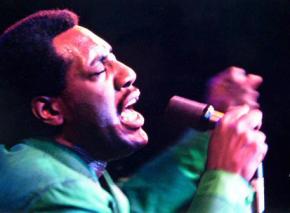Well-red for the holidays
SocialistWorker.org writers offer their suggestions for books, movies and assorted other stuff for the hard-to-shop-for radicals (or otherwise) on your holiday list.
Nicole Colson
As the "red sheep" of my family, I'm always looking for "cool socialist aunt" presents to dole out to my sister's four kids--presents that, hopefully, have nothing to do with Justin Bieber, the Jonas Brothers or anything Disney Channel-related. (Despite my best efforts, my nieces and nephew don't yet recognize the genius of the Clash.)
This year, for my oldest niece, Haymarket Books has come to the rescue with 101 Changemakers: Rebels and Radicals Who Changed U.S. History, a book geared toward middle school students that provides short biographies of figures past and present who have struggled to make the world a better place.
I plan on showing my niece the entries for some of my personal favorites--historian Studs Terkel, singer Bob Dylan and poet Audre Lorde, among others--and using the book to not only introduce her to some of their work, but hopefully to spark a larger discussion about the kind of world she hopes to live in someday. It may not be a Bieber CD, but I think it will be a hit.

This year, there wasn't much new music that really rocked my socks off. Instead, I turned to the past--specifically to the Stax record label.
Born in Memphis in 1957, Stax was something almost unheard of--a white-owned label that showcased multiracial talent at a time when the South was still segregated. Under the guidance of Jim Stewart and Estelle Axton, Stax developed a legendary list of artists that included Sam and Dave, Isaac Hayes, Otis Redding, Booker T. and the MGs, and the Memphis Horns, among many others.
If you have to pick one Stax album to own, make it Otis Redding's Otis Blue: Otis Redding Sings Soul. The vast majority of the album was put down in one 24-hour period in 1965--with a break during recording so that the musicians (including the Stax house band, the MGs) could play their regular club gigs.
In addition to Redding classics like "Respect" and "I've Been Loving You Too Long," the album contains covers of Sam Cooke's "A Change Is Gonna Come" and the Rolling Stones' "Satisfaction." The widely available collector's edition contains live cuts from classic Redding performances at LA's Whiskey A Go Go and from the Stax European tour. It's a must-have for any soul music fan.
For those interested in Stax's later years, pick up a copy of Wattstax on DVD. Sometimes referred to as the "Black Woodstock," Wattstax was a daylong concert in Los Angeles held on August 20, 1972, that showcased Stax artists as a way of giving back to the ravaged Black community. It drew 100,000 African Americans to the LA Coliseum--one fifth of the Black population of LA and the largest gathering of African Americans in the U.S. to that point with the exception of 1963 March on Washington.
The concert film captures classic performances from the Staples Singers, Isaac Hayes and other Stax artists during the height of the Black Power movement. Interspersed with the live concert footage, a young comedian named Richard Pryor performed his material as a monologue for a single camera--to act as what the director described as a "Greek chorus" for the resulting film.
Deemed too controversial for wide release at the time, Wattstax is an amazing time capsule of soul music and Black life in the inner city.
For those of the geek persuasion (and I include myself in that club), I highly recommend the comic series Dial H for Hero. Written by socialist fantasy author China Miéville and drawn by Mateus Santolouco and David Lapham, Dial H is a part of DC Comics' "New 52" line of rebooted titles. The premise--the possession of a phone dial enables the user to transform for a short time into a seemingly random superhero--is an exploration into the nature of heroism and identity.
The story arc follows the exploits of Nelson, a schlubby "ordinary guy" who stumbles onto the dial in a crisis--and is plunged into a world where, suddenly, nothing can be the biggest threat of all. I've been delighted by Nelson's various transformations--into the smoking, charred Boy Chimney; the radioactive Human Virus; the statuesque Baroness Resin (who, as a woman, is a particular affront to Nelson's sense of personal identity); and, my personal favorite, the Iron Snail.
Just as interesting are the heroic identities that Roxie, an elderly woman with her own dial who teams up to help Nelson, explains that she has consciously suppressed--identities like "Golliwog" and "SS Ilsa" that trade in caricatures and horrific stereotypes (which remain all too common today in the world of comics).
"What kind of insensitive pig--or racist--would put that out into the world," Roxie asks, in a not-so-veiled comment on the nature of the comic and culture industry. This isn't your typical superhero story--it's grittier and somewhat off the beaten path (in the best way). The ongoing storyline continues to raise the question: What does it mean to surrender your identity in the service of something bigger?
Alan Maass
The film Lincoln has sparked an interesting and intense discussion about the Civil War and the abolition of slavery in the U.S., which is all for the good--the left in the U.S. should know and talk more about one of the most important struggles for liberation in world history, and not only because it took place in this country.
I thought Lincoln was a great movie, especially the amazing performance of Daniel Day-Lewis (and not to get sidetracked or anything, but you can be dazzled by him any time on Netflix by streaming In the Name of the Father, about the struggle of the Guilford Four, just saying...). But there's a lot more to know about the Civil War that isn't in the film.
Critics have rightly pointed out that Blacks, slave and free alike, aren't directly depicted in the film in a way that would show the decisive role they played in the struggle. Interestingly, a couple books have been written recently about the relationship of Lincoln and the great Black abolitionist Frederick Douglass, who played a significant part in influencing Lincoln from the left. The one I liked best is The Radical and the Republican: Frederick Douglass, Abraham Lincoln, and the Triumph of Antislavery Politics, by James Oakes.
Lincoln is narrowly focused on Washington politics and Congress' passage of the 13th Amendment to abolish slavery. I don't think that's the fatal flaw others do, but it's true that the destruction of slavery was also happening materially across the South with the advance of the Union army and the slave revolts in anticipation of emancipation. For the full picture, James McPherson's superb (and super-sized) Battle Cry of Freedom: The Civil War Era is essential.
If you want to dig into the debate about Lincoln's role in the Civil War and how a moderate politician with some contradictory personal views became a war leader willing to take revolutionary action, you'll want to start with two books of essays by McPherson: Abraham Lincoln and the Second American Revolution and Drawn With the Sword: Reflections on the American Civil War. Another invaluable source is the writings of Karl Marx and Frederick Engels. Several collections gather their journalism, letters and other commentary on the Civil War--you'll find a lot of this on the Marxists Internet Archive.
On a different note, my daughter got me reading the novels of John Green, whose books are classified as young adult fiction, which is true enough, but not really adequate, since you don't need to be young to like them, only to remember when you were. In his video blogging incarnation, Green is also one of the wizened sages of the Nerdfighters (slogan: "We fight to increase the awesome and decrease the suck. What more is there?"--words to live by).
The Fault in Our Stars and Paper Towns are piercingly beautiful and soul-stirring, but for this crowd, I recommend Will Grayson, Will Grayson, co-written with David Levithan. Buy it for a young adult if you must, but beware of reading "just a few pages" before you wrap it, or you might find yourself in need of another present. Maybe something about the Civil War...
Sherry Wolf
Older women, especially elderly women, are presented in our culture as irascible coots, charming ninnies or nurturing matriarchs. But almost never are women over 65 portrayed as sexually desirable or desirous.
So when I came across Deirdre Fishel's film, Still Doing It: The Intimate Lives of Women Over 65, I was excited at the prospect that such a film even exists. The fact that it not only busts through cultural stereotypes but presents engaging portraits of old women's lives makes this a must-see video for budding feminists and older women (and men) alike.
The nine women featured in Still Doing It express a range of older American women's experiences. Ellen, who married in the 1950s and came out as a lesbian through the women's liberation movement of the 1970s, chuckles over the thought that young people who give up their seats on the bus to her and her partner "have no idea what hot numbers we are in bed."
Juanita is 74, Black and religious, and vowed never to marry after her husband died when she was a young mother of two. She's been with the same male lover for 30 years, and though she admits her sex life is a sin against her religious beliefs, she is a proud great-grandmother of nine who cannot fathom feeling complete without her sex life.
Perhaps the woman whose story crashes against even the most radical iconoclast's notion of a sexually active person is Frances, 87, blind and living in a nursing home where she must get around by wheelchair. She considers David, whom she met at 80, to be the great love of her life, and we watch their intimacy and hear them discuss their passion for each other. We even watch Frances contend with the passing of her beloved David.
Frances' story forced me to grapple with my own notions of ageing and physical impairment to confront the fact that the inevitable physical changes in our bodies do not have to mean the end of a healthy sex life.
Fishel does an excellent job using these women's stories to discuss the structural obsession with youth under capitalism. She allows older women to speak for themselves about what it's like to be ignored and dismissed as they cease to conform to our society's notion of beauty.
As the fastest-growing sector of the U.S. population, women over 65, half of whom are widows, are in the best position to challenge our culture's ageism. Still Doing It is implicitly radical without coming off as propagandistic. The film invites us to confront one of the last unquestioned myths about age and gender and for that it earns a spot on my holiday picks.
Author Sarah Schulman has spent more than 20 years combining her political activism with writing novels, plays and non-fiction works, in particular chronicling the history of ACTUP, the HIV/AIDS direct action group. In Israel/Palestine and the Queer International, Schulman takes on apartheid Israel's attempts to manipulate that state's marginal LGBT rights for Jews in order to divert attention from or "pinkwash" its occupation of Palestine, a phenomenon often referred to using Jasbir Puar's term "homonationalism."
Schulman details the central role of Palestinian and other Arab queers in raising LGBT rights both inside the global boycott, divestment and sanctions (BDS) movement and against the Israeli propaganda machine. Her narrative is a compelling human story that is also a political polemic against the narrowness of U.S. LGBT politics today.
In detailing several recent and often successful struggles against attempts by state-sponsored Pride events to ban pro-Palestine queers, Schulman reminds us of the radical roots of the LGBT movement. "A movement built in illegality and rebellion had become so enmeshed with the state that it could not imagine running an event without grants from the government. Hence homonationalism, " she writes.
As always, Schulman shares insights into the political thinking at the heart of oppressive structures, such as Israel's refusal to admit the brutality of its occupation: "the Israeli 'silencing mechanism' is a pathological behavior designed to protect a delusion of superiority. And it requires escalated upkeep."
Because Schulman is a well-established figure on the queer left, her decision to write about her own initial hesitations, misgivings and ignorance of the depth of Israel's oppressiveness invites newcomers to the topic to delve in without embarrassment over their own lack of knowledge.
The book introduces her vast audience of readers to an array of queer Arab groups, from the Palestinian Al Qaws and Aswat organizations to Lebanon's Helem, all of which have made central contributions to our understanding of sexuality in the those countries from the vantage point of queers themselves.
Schulman was the impresario of the unprecedented six-city U.S. tour of those activists in 2011, which helped shift the political debate about solidarity and sexuality in the U.S. Her book leads readers to conclude, along with Schulman, that BDS, "a strategy devised by the oppressed, but dependent on allies...Is the strategy with the most potential for success."
Lance Selfa
One of the more misunderstood results of last November's election was the referendum in Puerto Rico that indicated support for the island to become the 51st U.S. state. If you want to understand the politics of the referendum, you can check out Socialist Worker or Obrero Socialista. But if you want the longer view of how the current conjuncture fits with Puerto Rican history, I'd recommend reading Jose Luis González's El país de cuatro pisos (published in English as The Four-Storeyed Country).
This short book of essays, written in 1979, deserves a wider readership. It's one of the foundational Marxist analyses of Puerto Rican history and nationalism. González analogizes the development of Puerto Rico to that of a four-story building, with each story representing a different epoch in the creation of the country's national and political identity.
González concludes that the confluence of these currents produced no single nationalism, but two conflicting nationalisms, reflecting a dominant elite culture and a dominated mass, working-class culture. He explains the limited appeal of pro-independence forces, in part, due to the failure of traditional elite independentismo to reflect or to champion the aspirations of the working class.
Certainly much has changed in Puerto Rico since El país appeared, and I'm not sure what González, who died in 1996, would say today. He envisioned an independent, socialist Puerto Rico as part of a Caribbean socialist federation. There are many interesting nuggets in El país de cuatro pisos, which is one of those rare works that turned conventional analysis of history and culture upside down.
Recently, a friend told me that he planned to read Elizabeth Laird's A Little Piece of Ground with his 11-year-old son. I heartily endorsed my friend's choice. The core of the book is the relationship between three 12-year-old boys in Israeli-occupied Ramallah in Palestine. The main protagonist is Karim, a Muslim with family roots in Ramallah.
The book relates Karim's relationship with his friends Joni, a Christian also with roots in Ramallah; and Sami, nicknamed Hopper, a refugee whose family was expelled from Ramle in 1947. Karim befriends Hopper, who takes him to a small plot of land adjacent to the refugee camp where they proceed to create a football pitch.
Nearby, they create a hideout in a broken-down car in a garbage dump where the three boys rendezvous for soccer games. They make the "little piece of ground" a sort of oasis where they can do "boy things" amidst the chaos and repression of Israeli occupation. It's a place that they build on their own. The book uses the "little piece of ground" as something of a metaphor for Palestine itself.
I won't give away much more about the book except to say that it's a testament to the Palestinians' will to assert their human dignity in the face of Israeli attempts to break their spirit. It's a story that young adults (and older adults, for that matter) will gain from reading.
I'm not always a fan of political documentaries, which are often too depressing or didactic for my taste. The criticism of existing conditions may be necessary, but I'm much more interested in documenting the struggle to change them. And that's where a couple of recent documentaries, which I imagine are available on Netflix, stand out.
The Take is Naomi Klein and Avi Lewis' 2005 chronicle of the struggle of workers in an auto parts plant in suburban Buenos Aires, Argentina, to take over and run their factory after the bosses abandon it. Klein provides commentary on the events surrounding this effort to run this plant and hundreds of others "sin patrón" (without a boss) following the country's economic collapse and the 2001 uprisings that chased five presidents from the palace.
But the essence of The Take is the very human story of solidarity and tenacity as the workers assert their right to control their workplace. My other pick is David Zeiger's Sir, No Sir, an oral history of the movement against the Vietnam War among U.S. service members.
Not only is the film informative--recapturing a crucial chapter of that period's history that many establishment histories would like to bury--but it's also inspiring. It provides dozens of unsung activists (and even a few famous ones, like actress Jane Fonda) an opportunity to set the record straight.
You can almost feel their outrage and excitement jump off the screen. The rank-and-file activists may be describing decades' old events, but they convey them with an immediacy that won't be lost on today's generation of veterans of the Iraq and Afghanistan wars.


